Seaweeds of the South African South Coast


Order Ceramiales
Family Rhodomelaceae
Symphyocladia marchantioides (Harvey) Falkenberg in Schmitz & Falkenberg 1897: 444
Plants comprising prostrate stoloniferous axes and erect upright blade-like axes up to about 10 mm tall. Upright axes foliaceous, comprising laterally fused branches, confluent with prostrate axes or somewhat stipitate; fertile marginal portions of blades becoming filamentous. Plants dorsiventral, ventral cells slightly larger than dorsal cells; some ventral pericentral cells cutting off haptera. In a Western Cape specimen, segments reported to have 4-5 pericentral cells and some cortication from flanks of the filaments, especially on dorsal side of thallus. In other parts of world, segments with 6-8 pericentral cells, and no cortication. Tetrasporangia in more or less de-coalesced margins of fronds, one per segment, up to 70 µm in diameter with two long and one short cover cell. Sexual reproductive structures not seen.
Collections, ecology and regional distribution
Recorded from Cape Hangklip, ca 100 km west of Agulhas, to northern Kwazulu-Natal (19-58). Found in the lower eulittoral and sublittoral zones.
World distribution: Also found in Italy, the Azores and parts of the Pacific including New Zealand and Australia (Guiry & Guiry 2013).
Type locality: Hawke’s Bay, New Zealand (Silva et al. 1996).
Note: The Kwazulu-Natal specimens illustrated by Norris and Aken (1985) and De Clerck et al. (2005) are very similar, and somewhat different to those described by Stegenga et al. (1997) from Cape Hangklip: in the latter the axes and laterals are described as “completely confluent”.
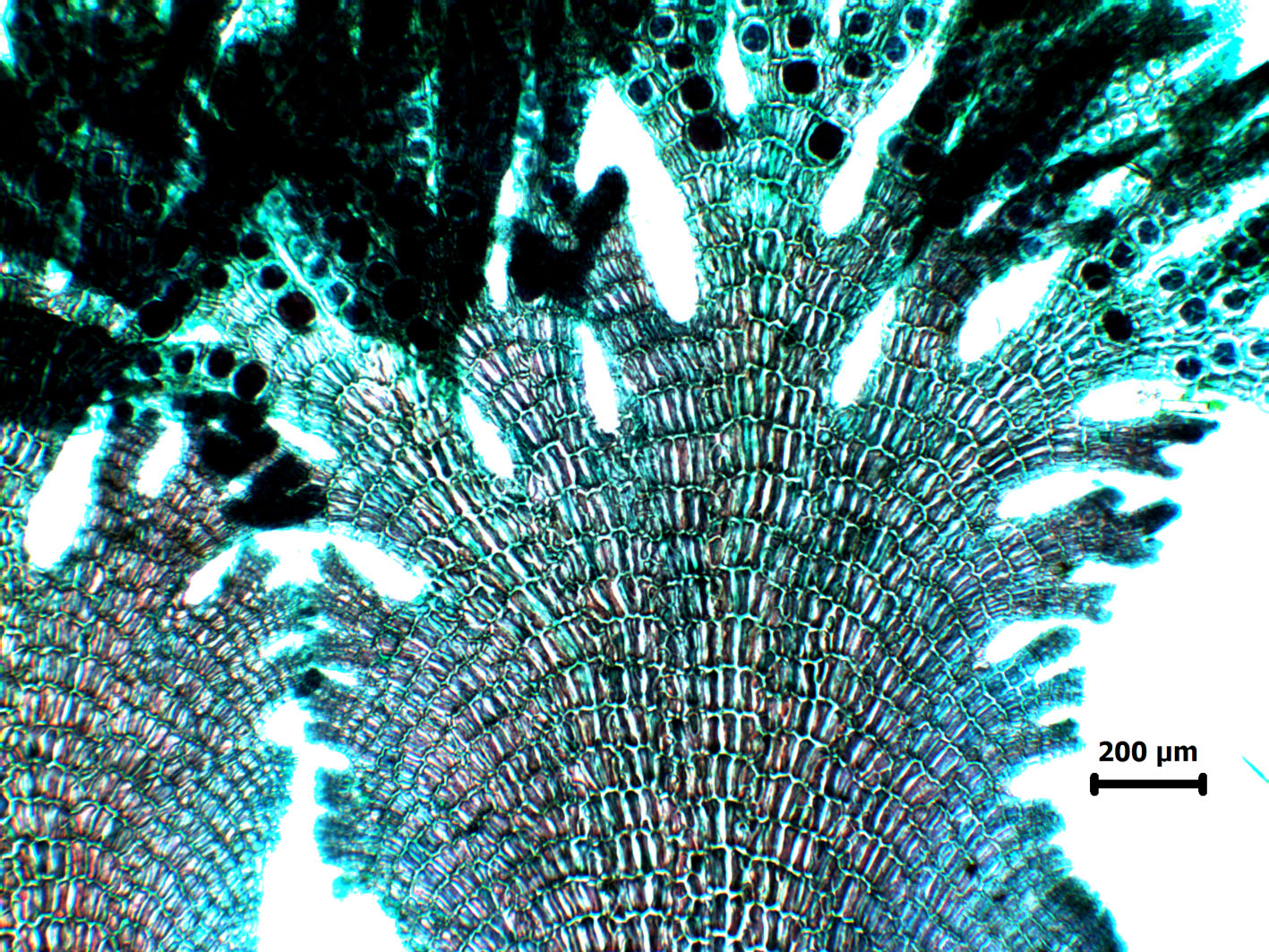
Symphyocladia marchantoides, part of stained slide specimen (Cape Hangklip, Western Cape).
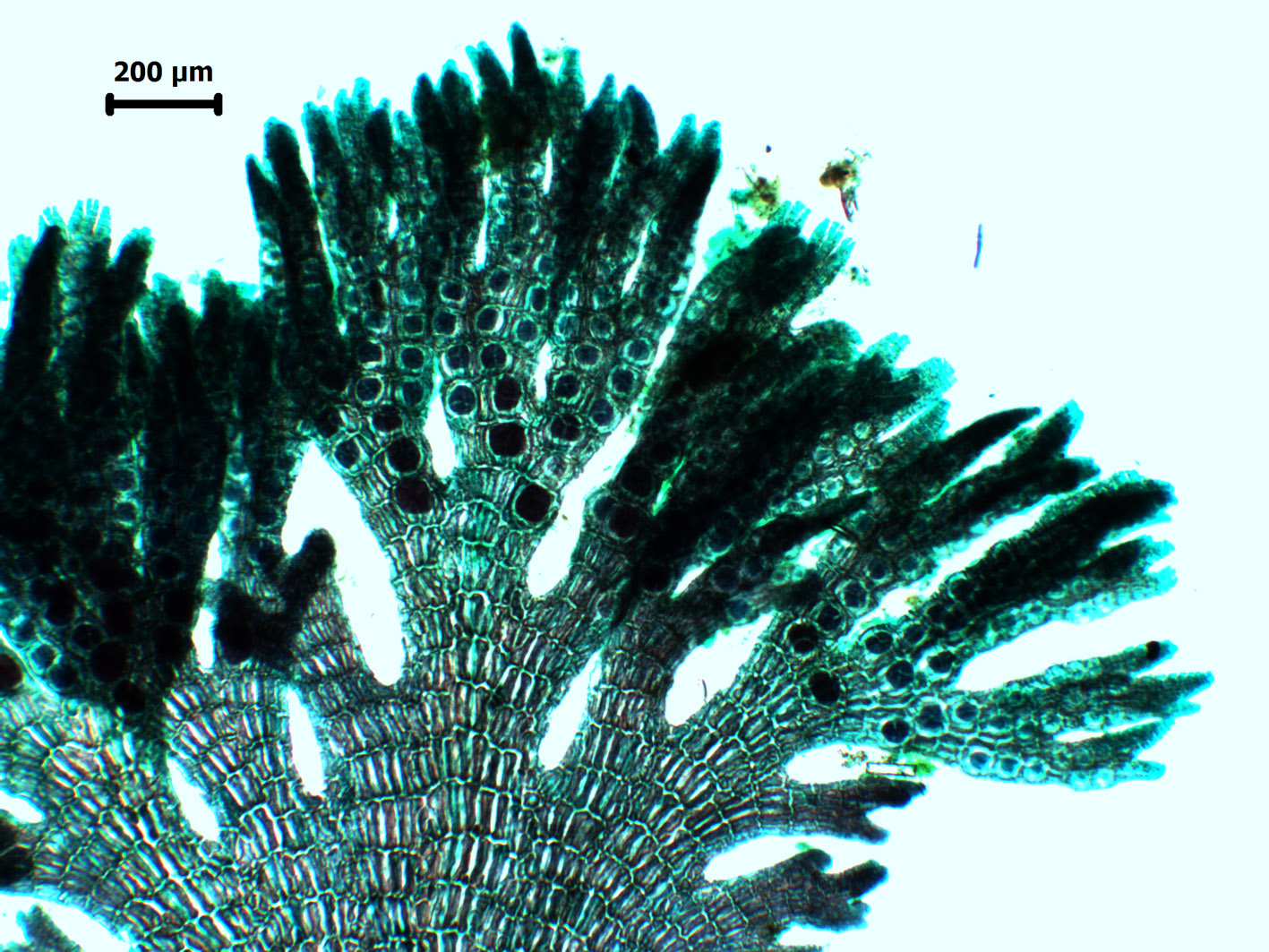
Symphyocladia marchantoides, part of stained slide specimen showing tetrasporangia (Cape Hangklip, Western Cape).
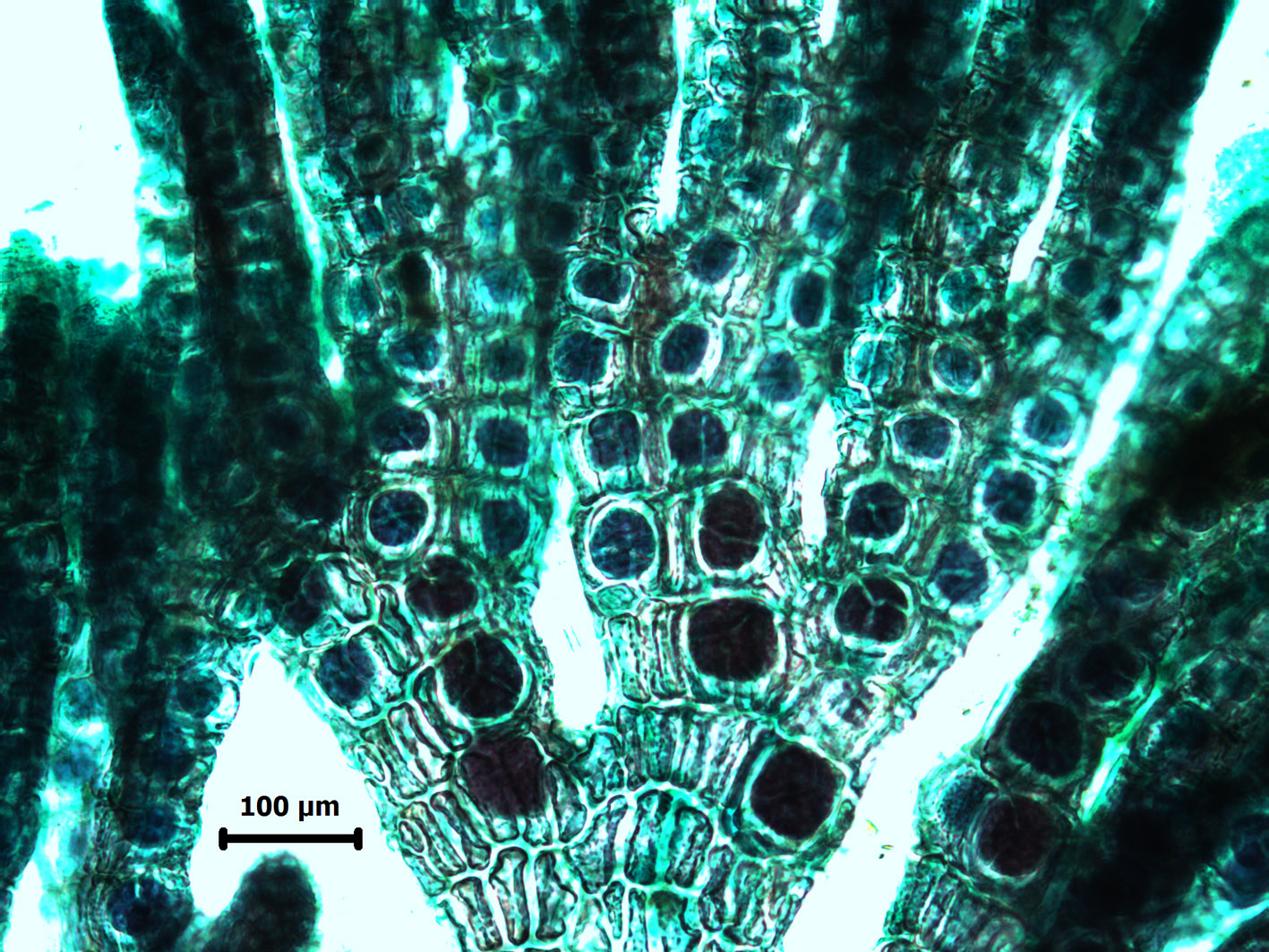
Symphyocladia marchantoides, detail of tetrasporangia, stained slide.
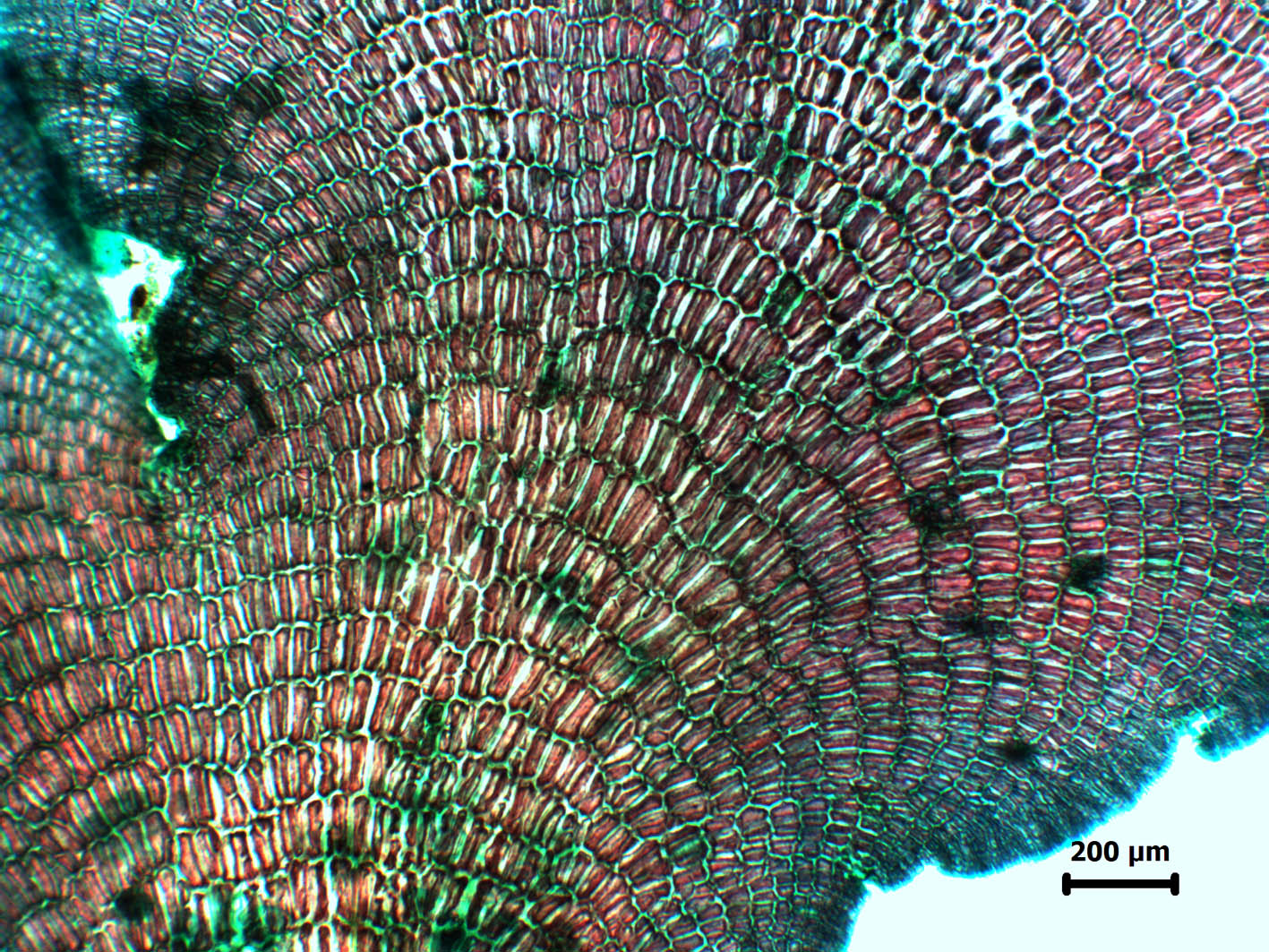
Symphyocladia marchantoides, cell detail- stained slide specimen (Cape Hangklip, Western Cape).
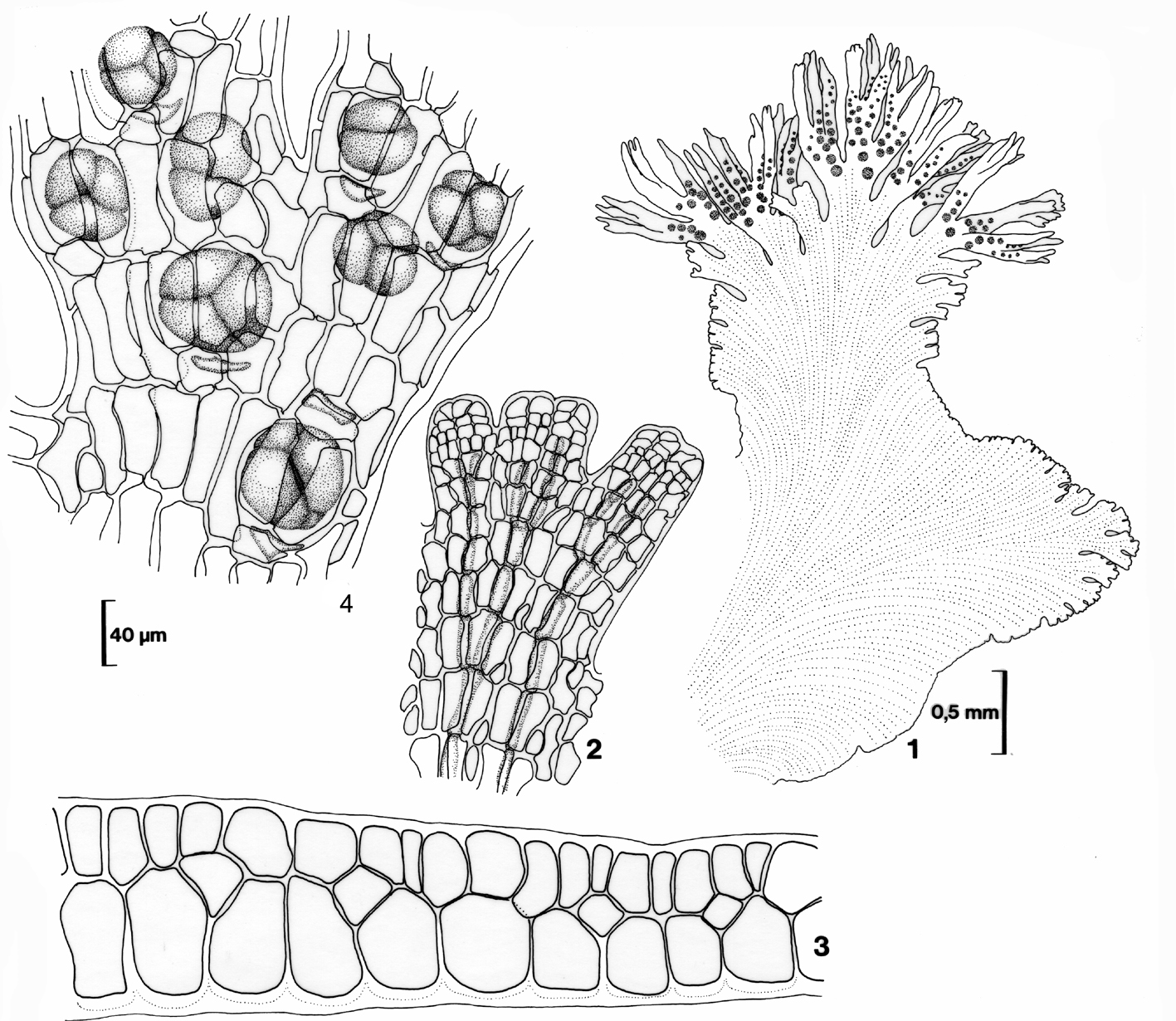
Symphyocladia marchantoides. 1. Apex of fertile blade. 2. Detail of thallus apex. 3. Cross section of blade. 4. Tetrasporangia. Reproduced from Stegenga et al. (1997, plate 244, as Symphyocladia cf. marchantioides).
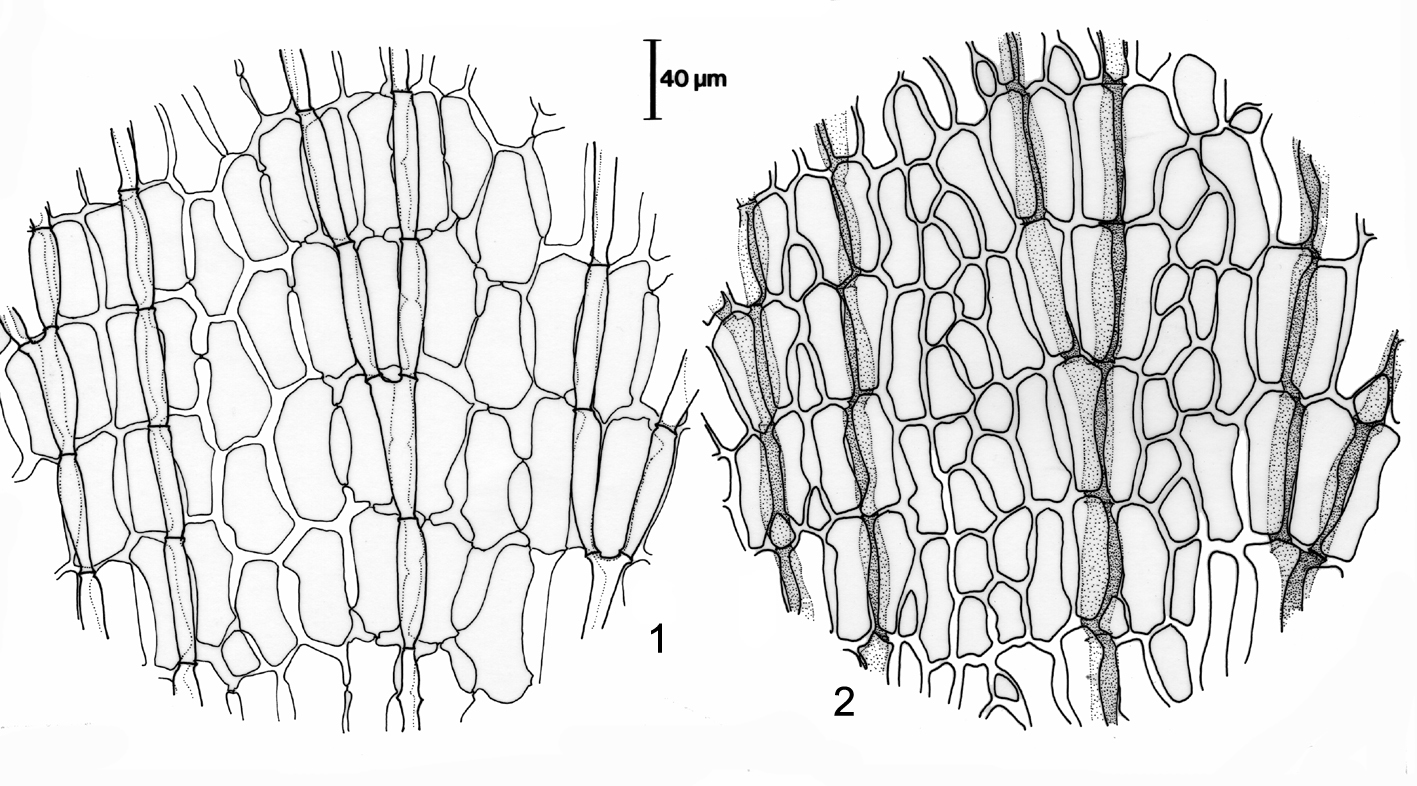
Symphyocladia marchantoides. 1-2. Surface view of older thallus, providing view of ventral (1) and dorsal (2) pericentral cells. Reproduced from Stegenga et al. (1997, plate 244, as Symphyocladia cf. marchantioides).
References Symphyocladia marchantioides
De Clerck, O, Tronchin, E. M., Schils, T. 2005. Red algae. In: De Clerck, O., J.J.Bolton, R. J. Anderson and E. Coppejans. 2005. Guide to the Seaweeds of Kwazulu-Natal. National Botanic Garden of Belgium, Brussels (Scripta Botanica Belgica), pp. 130-269.
Guiry, M.D. & Guiry, G.M. 2013. AlgaeBase. World-wide electronic publication, National University of Ireland, Galway. http://www.algaebase.org; searched August 2013.
Norris, R.E. & M.E. Aken 1985. Marine benthic algae new to South Africa. South African Journal of Botany 51: 55-65.
Schmitz, F. & Falkenberg, P. 1897. Rhodomelaceae. In: Die natürlichen Pflanzenfamilien nebst ihren Gattungen und wichtigeren Arten insbesondere den Nutzpflanzen unter Mitwirkung zahlreicher hervorragender Fachgelehrten, Teil 1, Abteilung 2. (Engler, A. & Prantl, K. Eds), pp. 421-480. Leipzig: verlag von Wilhelm Engelmann.
Silva, P.C., Basson, P.W. & Moe, R.L. 1996. Catalogue of the benthic marine algae of the Indian Ocean. University of California Publications in Botany 79: 1-1259.
Stegenga, H., Bolton, J.J. & R. J. Anderson. 1997. Seaweeds of the South African west coast. Contributions from the Bolus Herbarium 18: 655 pp.
Cite this record as:
Anderson RJ, Stegenga H, Bolton JJ. 2016. Seaweeds of the South African South Coast.
World Wide Web electronic publication, University of Cape Town, http://southafrseaweeds.uct.ac.za; Accessed on 15 December 2025.